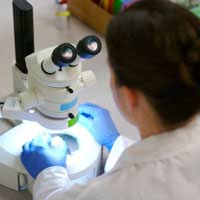All About The Researchers Who Alerted The World To CFCs

Mario Molina was a lowly post-graduate researcher in California when he first realised that man-made chemicals such as CFCs were damaging the ozone layer.
Fortunately his superior, Sherwood Rowland, took his findings seriously, and the pair went on to publish an article in 1974 in which they spelled out the dangers of continued use of CFCs.
Unfortunately, many other scientists – and big businesses – were pretty sceptical, and it took some time before they proved their case to such an extent that CFCs were banned in aerosols (although still used widely for some time for other purposes).
Prior to their research, it had always been assumed that the ozone layer was a permanent fixture that had taken care of itself – and would continue to do so.
So, without the work of Molina, mankind would have continued to risk the destruction of this vital component of our atmosphere. In his biography, he said Rowland had given him a list of possible research topics and he chose to look at the fate of CFCs in the atmosphere – although initially, the work did not seem particularly interesting.
Pair Awarded Nobel Prize
However, it wasn’t until 20 years after his discovery that he and Rowland finally received formal recognition for their planet-saving work when they shared the Nobel Prize in chemistry with Professor Paul Crutzen, a Dutchman, who had discovered in 1970 that ozone reduction is accelerated by nitrogen oxides.The Nobel Prize committee said that, although many people had been critical of their calculations at first, it turned out that they had actually under-estimated the risk from CFCs.
By this time, Molina was working at MIT (Massachusetts Institute of Technology) and the institute’s president said the prize proved that the most fundamental of scientific inquiries can turn out to have important global ramifications. He said it was also proof that sometimes “nice guys finish first.”
Further Research Work Into Ozone Depletion
Molina, who was just 31 when he made the CFC discovery, went on to author or co-author a number of papers over the following years that defined compounds involved in catalytic ozone destruction.In recent years, he has also demonstrated a new reaction sequence, which is thought to be partly responsible for ozone destruction in the Antarctic.
In 1989, he received the NASA Medal for Exceptional Scientific Achievement, and in the 1990s he served on the USA’s President's Committee of Advisors on Science and Technology.
Born in Mexico, Molina continued to work at MIT (where his former wife, Luisa, was also involved in ozone depletion research) until early 2005.
He then moved back to the University of California, and also set about establishing a new centre for energy and environmental studies in Mexico City.
Previous Research Played A Part
The early work carried out by Molina and Rowland relied to some degree on research undertaken by Richard Stolarski and Ralph Cicerone from the USA. They showed that free chlorine atoms can decompose ozone in the atmosphere in a similar way to nitrogen oxides.They also credited British scientist James Lovelock, who had previously developed a sensitive device to measure low organic gas content in the atmosphere that was used to demonstrate that CFC gases had spread globally.


Re: What is Damaging the Ozone Layer
Wonderful information. Please wrote whether ultraviolet radiation are causing systemic sclerosis.
Re: What is Damaging the Ozone Layer
Hi... The given informations are really helpfull in my study. Thank you., let me ask one more thing What are the harmfull…
Re: The History of the Ozone Layer
do you have any links to resources on Charles Farby and Henri Buisson?? a furry is in need. thank you xd
Re: What Will Happen to Life on Earth if Ozone Depletion Continues?
You can't defy gravity, it's not possible as you could cause a rip in space time.…
Re: How Ozone Depletion will Affect Global Plant Life
I really love this article and its great for my research paper about the effects of ozone depletion on…
Re: What Will Happen to Life on Earth if Ozone Depletion Continues?
im usin this as homework help and it is very good so well done
Re: What is Damaging the Ozone Layer
To whoever wrote this article - Can you please write another article that tells everyone about, specifically, household…
Re: How Ozone Damage has Affected the Lives of People in Chile
What kind the paper I will need ,if I want to go tiwan please ,now I leave chili.
Re: Countries Most at Risk from Ozone Depletion
Nerada, The problem with your thinking that we are causing the ozone depletion is ignorant. It has been said…
Re: Countries Most at Risk from Ozone Depletion
Ozone depletion is real dude. Scientists from different countries with different political ideologies have all…